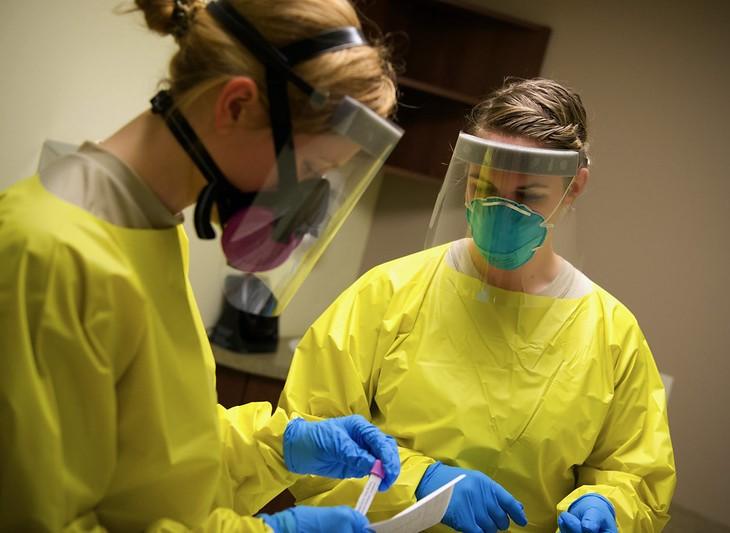The pandemic was less deadly in countries that rank higher in preparedness, according to new study findings, which counter the perception that the countries with the best capacities fared worst during the heat of the battle with COVID-19.
Researchers also dug into how well countries used their tools, a factor that hampered outcomes in the United States. The team from Brown University School of Public Health, the Bill and Melinda Gates Foundation, and the Nuclear Threat Initiative (NTI) detailed their findings yesterday in BMJ Global Health.
The group's new findings are part of national and global efforts to examine COVID responses and retool response plans, based on lessons learned about what went wrong—and what went well.
Population age, weaker capacity can distort outcomes
The goal of the study was to understand if country performance during the pandemic was related to how high they ranked on the Global Health Security Index, which measures capacities of 195 countries.
In a unique aspect of the study, the group examined "comparative mortality ratios" and adjusted for age-related demographics, which the authors said can distort national death rates. For example, countries with older populations typically have higher baseline mortality rates.
Another factor that can distort the data is that some countries with weaker capacity under-reported COVID cases and deaths, making it look like better-prepared countries performed worse. The group said the comparative mortality ratios also helped account for those effects.
Countries that took significant action before the pandemic to invest in capacity to prevent, detect, and respond to these types of events were much more effective.
Higher levels of pandemic preparedness capacity correlated significantly with lower excess COVID deaths. Researchers said the findings correct earlier observations that countries that scored high in pandemic preparedness measures had some of the worst COVID outcomes, along with the highest COVID death rates.
Jennifer Nuzzo, DrPH, the study's senior author and director of the Pandemic Center at Brown University, said in an NTI press release that the analysis confirms what most people would expect. "Countries that took significant action before the pandemic to invest in capacity to prevent, detect, and respond to these types of events were much more effective at protecting the health of their populations and had much better outcomes overall," she said.
Why was the US such an outlier?
Still, the United States stood out as an outlier. Though it scored highest in the preparedness index, 62 countries had lower comparative mortality ratios.
In examining why, the researchers found that the United States had a relatively low score on a measure that the GSI Index calls the "risk environment," which measures how well countries develop and implement timely and effective response actions.
The deficiencies in the United States on that measure resulted in a disorganized COVID-19 response that was hamstrung by different measures in different states, rules that slowed the rollout of testing equipment, and inconsistent messaging that undermined the public's compliance with control measures such as social distancing and vaccination.
We can now point to clear evidence of the immense value of building essential pandemic preparedness capacity.
Countries that were top performers on the GSI Index's "risk environment" measure, including Iceland and New Zealand, had some of the pandemic's lowest mortality rates.
Jaime Yassif, PhD, NTI's vice president of global biological policy and programs, said it's important to get the details right when analyzing the link between pandemic preparedness and outcomes. "As countries evaluate their COVID-19 performance, we can now point to clear evidence of the immense value of building essential pandemic preparedness capacity and the deadly consequences of failing to do so."




















